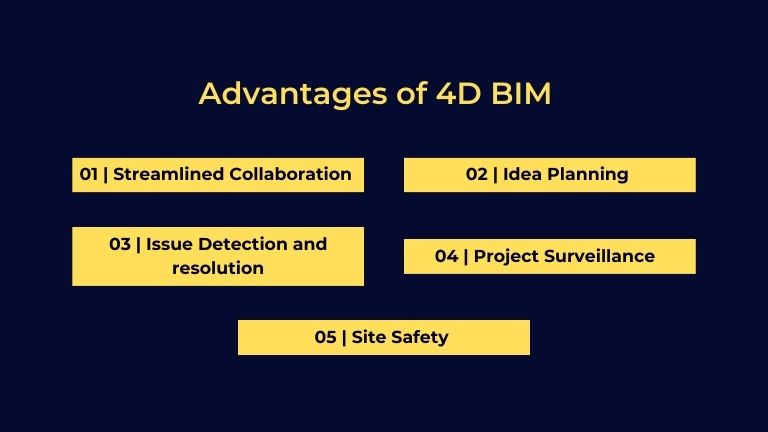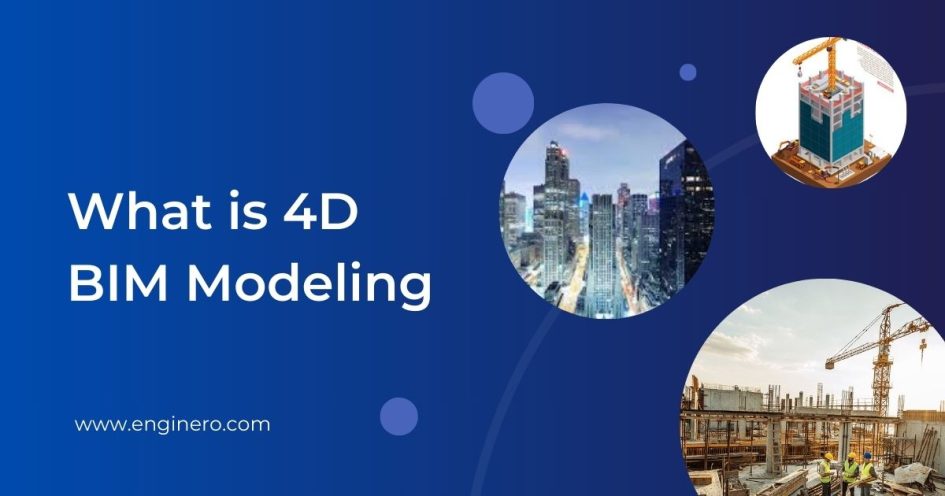What makes a construction project significant? Responses can be diverse, but what we consider prominent is the way the plan is made and executed with ideal attention. In this case, the forerunner with impacting ability is 4D BIM (Building Information Modeling).
This ideal innovation has enforced a new method and process of aggregating the 3D models of multiple niches of the project with their crucial information, constructing the building, and enhancing the lifecycle management of the project without any hindrances.
The way of collaborating on the projects was redefined with BIM. Now, what if we say there is another push to derive more significance for construction projects with BIM? Here is 4D BIM, the enchanting grip for the construction industry to leverage better ways of project development.
What is 4D BIM? How is it impactful? All these questions might be circulating now. In this blog, we disclose 4D BIM and its advantages to the construction industry.
What is 4D Building Information Modeling (BIM)?
We know multiple factors determine the seamless flow of the construction project, and among them, the time frame in which the project is developed and delivered holds more prominence.
BIM is the method of creating 3D models for projects with ideal information about the disciplines and letting the respective professionals coordinate and develop the project without misconceptions. 4D BIM is an advantage for BIM with time integration to leverage ideal results for the projects.
4D BIM is the method of combining the 3D models with time, providing schedules to the project teams based on the process and the relative time as sequences. BIM aggregates architects, engineers, stakeholders, and other professionals on the project and lets them collaborate on the 3D models and the data within.
Wherein 4D BIM sequences the project’s timeframe, including deliverables and time estimations for each aspect. This dimension of time with 3D models streamlines coordination and collaboration in an enhanced state where the schedules can let the professionals detect potential clashes at the specified times and resolve them immediately to avoid costly mistakes in the future.
Advantages of 4D BIM
The integration of the time schedule with the existing 3D model gives the project ideal benefits. Here are certain perks of embracing 4D BIM:

Streamlined Collaboration
4D BIM offers the construction sequence animation based on the 3D model data and the time schedule data. This animation enhances the whole model with visual representation and creates new ways of coordinating and collaborating on the project.
The visual representation reduces the time frame for collaborating and lets the architects, stakeholders, and other team members communicate, get insights on the exact point of the model and the project, and make informed decisions, unlike the traditional ways of collaboration.
Ideal Planning
4D BIM helps create more significant plans for the construction project.
The integration of schedule data and 3D models with information is an advantage for the stakeholders to analyze and create a potential plan for the project.
The enhanced visuals with 4D BIM make it possible for the stakeholders to read the model and create plans, eliminating errors, clashes, and other misconceptions.
This plan, through the integration of models and schedule data with the visual representation, enhances the ability of professionals to read the plan before execution. This lets the teams make informed decisions on the materials and tools to be used and avoid any delays or vague points.
Issue detection and resolution
Errors are inevitable with the construction project, but it is important to avoid them while executing the plan. The 4D BIM with visual representation gives the teams a transparent visual of the project plan. Since the 4D BIM promotes the shared model, every change to the model gets updated, and the professionals get informed about the updates. This makes everyone stay in a straight line.
With this, the project teams can analyze the model, check for issues and conflicts within, and remove them firsthand. The enhanced model visuals keep things in a straight line and avoid issues, eventually saving ample time and money.
Project Surveillance
When it comes to project management, monitoring the projects is way more prominent, as it determines the flow of the project as per the pre-determined protocols. Earlier, it was a hassle, but now with 4D BIM, it is easier and more enchanting.
The construction sequence animation gives a vast view of the model with which stakeholders and other professionals can view the project and make informed decisions at intervals to streamline the project flow. The authorities can utilize this to avoid any misconceptions about the model and intervene at the essential time.
Site Safety
The construction sequence animation with 4D BIM ensures ideal site safety for the construction project. The integration of schedule data with the 3D model streamlines security by creating a proper sequence of the models, and the project owners can monitor the project and make sure the plan is perfect and has zero possibilities for construction disasters.
The shared model will be transparent and let the project teams make informed decisions at the initial point before elevating the structures. This can avoid major hazards while constructing the buildings and ensure ideal safety.
4D BIM Adoption
Adopting 4D BIM for construction projects can be considered a fortune, as it enhances assistance in the long run. Will 4D BIM excel the projects instantly after adoption? It does not work that way; it needs proper implementation, like the sequences of BIM.
With a specific and proper set of implementations, 4D BIM propels significant benefits to the projects, which can positively impact the vertical. Here are the perks:
- Project management
- Extensive maintenance
- Assistance in acquiring materials
- Progression tracking and reports
- Initial verification of projects before commencement
- Site and worker safety
Comparing 4D BIM and 5D BIM
Integrating schedule data with the 3D BIM model is already an enchanting innovation. To bundle this eminence, here comes 5D BIM with the ability to draw cost estimations for the construction project.
Creating a 5D BIM model can let the teams develop a cost estimation for the sequences of the construction project and derive a financial benchmark. This can eventually improve aspects like quantity takeoffs, material procurement, cost reduction over unwanted expenses, and, lastly, effective cost management for the overall project.
Stakeholders and project owners can make use of 5D BIM and make informed decisions on the project flow with transparent data on project expenditures.
4D and 5D serve different purposes for the construction project but are connected. To commence the 5D BIM, it is essential to have the scheduled data of the 3D model, i.e., the 4D BIM. The model with the schedule data will be important to create a budget for each aspect of the model according to the timeframe of the specific construction part.
The future fortunes of 4D BIM implementation
The details on construction sequences and the respective time spent for those were once unpredictable and caused more hindrances all over the project atmosphere. The inception of 4D BIM can be a game changer in determining the schedule data of a construction project.
With the time-integrated scheduled data, the project teams can communicate well, seamlessly coordinate, develop unique, compatible strategies, and eventually achieve remarkable project lifecycle management.
Time is predominant for construction, and when there is a tool to read the schedule of time to be spent on the sequence of construction, it extends the way for ideal fortunes in the constructional realm.
Conclusion
The construction industry is relentlessly growing and is allying with significant digital innovations in the realm. 4D BIM can be the ideal tool to stimulate the project flow in an unprecedented way.
Time-related information in the 3D model serves numerous benefits, and we have listed the potential benefits that a project will embrace with 4D BIM implementation.
With that said, an ideal ally with significant knowledge of BIM can be an inevitable advantage for construction projects. Enginero, the ideal construction lifecycle management solution, enhances this with high-end precision.
Enginero enforces a centralized space for the team members to collaborate on the models and streamline the project flow effectively. With time-scheduling data, the 4D BIM model can be integrated into Enginero and enhanced to leverage significant results in the construction phase.

.png)

Leave a Reply